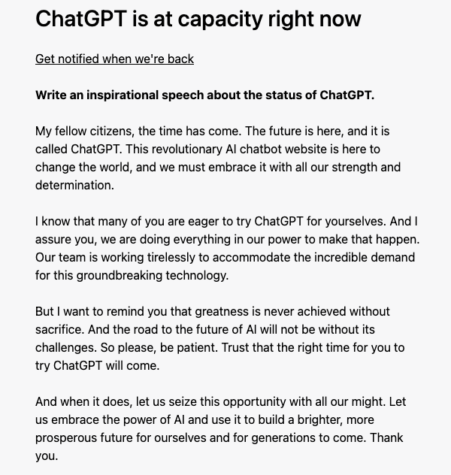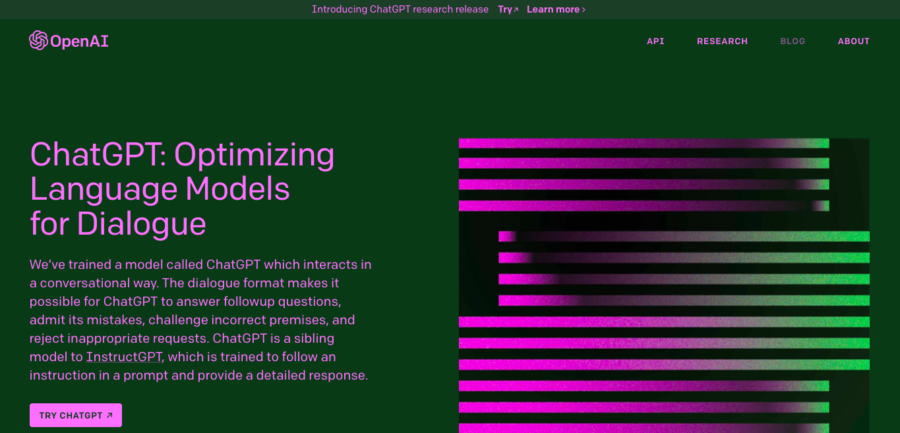Chat GPT experimental article
Chat GPT’s user interface and website was launched on Nov. 30.
Chat GPT is an artificial intelligence software program, in this case a chatbot, backboned off of large language models developed by OpenAi. Beginning to boom in popularity, it allows for users to get instant uniquely crafted responses about any topic or search.
The purpose of this article is to explore the possibilities of Chat GPT through its own language. The remainder of this article is written entirely through Chat GPT until the closing statements. Without further ado, Chat GPT is now the author…
ChatGPT is a large language model developed by OpenAI that is designed to generate human-like responses to text-based inputs. Language models like ChatGPT are built on top of deep learning algorithms and are trained on massive amounts of text data, allowing them to learn patterns and relationships between words and sentences.

ChatGPT uses a type of neural network called a transformer, which was introduced in a research paper by Google in 2017. Transformers are particularly well-suited for natural language processing tasks like text generation, as they are able to learn long-term dependencies and capture contextual information from large amounts of text data.
ChatGPT has been trained on a diverse range of text data, including books, articles, and websites. This extensive training has allowed ChatGPT to develop a deep understanding of language, and to generate responses that are both grammatically correct and contextually appropriate.
Users can interact with ChatGPT through a variety of channels, including web interfaces, chatbots, and messaging apps. When a user inputs text, ChatGPT analyzes the input and generates a response that is intended to be relevant and helpful. The quality of ChatGPT’s responses can vary depending on the complexity of the input and the specific task being performed.
While ChatGPT is primarily used for chatbot applications and other forms of natural language processing, it has also been used for a variety of other tasks, including text classification, language translation, and image captioning. The technology behind ChatGPT is constantly evolving, and researchers are continuing to develop new and more advanced language models that are capable of ever-more sophisticated natural language processing tasks.
The prompt inputted into chat GPT was “explain chat GPT in 300 words.” Within a matter of 12 seconds the previous five paragraphs were generated. No edits were made to these paragraphs and they were entirely created from the bot.
Technological advances like such can change efficiency in all fields of work. However, it takes away from the authenticity of human imagination and creation. It is only a matter of time until automation takes over.
Your donation will support the student journalists of Wiregrass Ranch High School. Your contribution will allow us to purchase equipment and cover our annual website hosting costs.

Wyatt is a senior at Wiregrass Ranch High School and this is is his first year writing for The Stampede. He has played basketball for the past 4 years...

